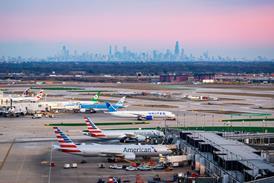The movement of airline share prices since the start of the year reinforces the view that industry stock in Europe and North America remains as volatile as ever writes Chris Tarry of CTAIRA.
Famous wit Oscar Wilde once defined a cynic as a man who knew the price of everything and the value of nothing. Stockmarkets, too, must wrestle with potential gaps between actual value and how that is reflected in share price. The movement of airline stocks so far this year is a case in point.
Worth remembering at the outset that while stock markets may react to latest financial figures, the share prices are effectively based on future expectations of performance rather than historic numbers. And despite the wide range of sophisticated mathematical models used to set prices, they all ultimately come down to assumptions about the factors, such as traffic and yield, that drive profit and cash. The valuation measures are used to compute a view of what the company may be worth. As a result this will enable a target price to be set which will determine whether the shares will have a buy, sell or hold recommendation attached to them.
While such underlying performance measures are of fundamental importance in setting price, so too is the less scientific factor of market sentiment. A look at some of the share price performances of airlines since the start of the year tells the story.
Generalisations are always dangerous, but in Europe it appears that there has indeed been an increasing gap between expectations and reality in the early part of the year. A number of airline share prices began to rise rapidly only to fall back as the year progressed. Shares in British Airways rose by almost 50% through to early March, as it seemed there might be an unwillingness on the part of some observers to let the facts get in the way of a good story. Most recently the shares were trading some 5% above their price at the start of the year.
The catalytic effects of the profit warnings from first Ryanair and then easyJet have been well documented and although the price of easyJet by mid-January was almost a third higher than at the start of the year, its current price is now some 45% lower. Within Europe only Austrian Airlines remains significantly ahead of its 2004 starting price, with a 70% gain. The fact that Lufthansa is some 25% lower, in part reflects the effects of its rights issue - but not entirely.
In North America shares in all of the principal airlines are trading below their start-of-year prices. For some it has been an inexorable downward trend, while for a few there has been the odd burst of upward movement.
The best performers are unsurprisingly Southwest Airlines and JetBlue Airways, with prices only 10% lower than the start of the year. WestJet Airlines, after the revision in its outlook, is now trading some 30% down. For the others the range sees drops of 30-50%.
While the absolute rise or fall of a share price is naturally important, its performance against a stock-market index is also relevant. The reality is that in Europe and the USA, stock markets have moved more or less sideways since the start of the year: the FTSE 100 is some 4-5% down and the Dow Jones 3-4% lower. As a consequence, there are indeed some airlines that have outperformed the market over the first half of the year.
One of the measures used to look at the performance of any share compared with the market is the value of its so-called Beta, which in effect looks at the historic volatility of a particular company's share price against a chosen index. A Beta value of one suggests that the share price will move more or less in line with the overall market. If it is higher, then the stock's movement will be more exaggerated and if it is lower then it will tend to fall less in a declining market - displaying greater "defensive attributes".
What then of the airline sector? In Europe the range among the principal airlines runs from 1.32 for easyJet through to 1.73 for BA as the most volatile. By comparison the Beta of the UK's BAA airport group is 0.78, suggesting that it has indeed shown classic defensive characteristics. Among the US airlines the range is much wider: 1.39 for Southwest to a highly volatile 3.81for the American Airlines group.
So what does this tell us of the future? Clearly that the market remains volatile and susceptible to external shocks. The self-help way to reduce the volatility is to cut the operational gearing of the company and, in particular, increase the variable element in total costs. However, for most this remains easier said than done. For the foreseeable future airline shares are likely to offer good trading opportunities, both up and down. As ever, the challenge for the equity analyst is to anticipate the turning points.
Source: Airline Business























